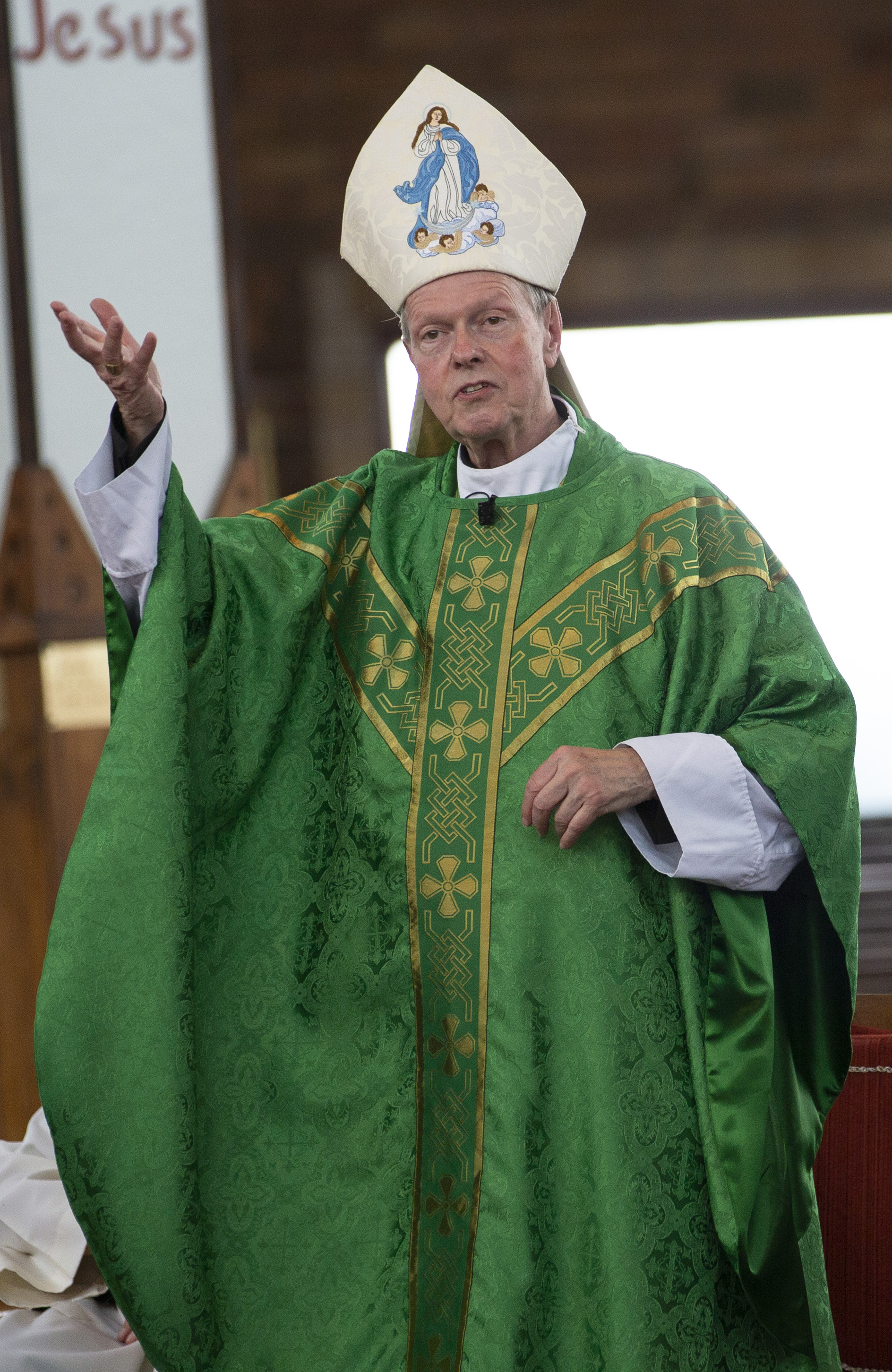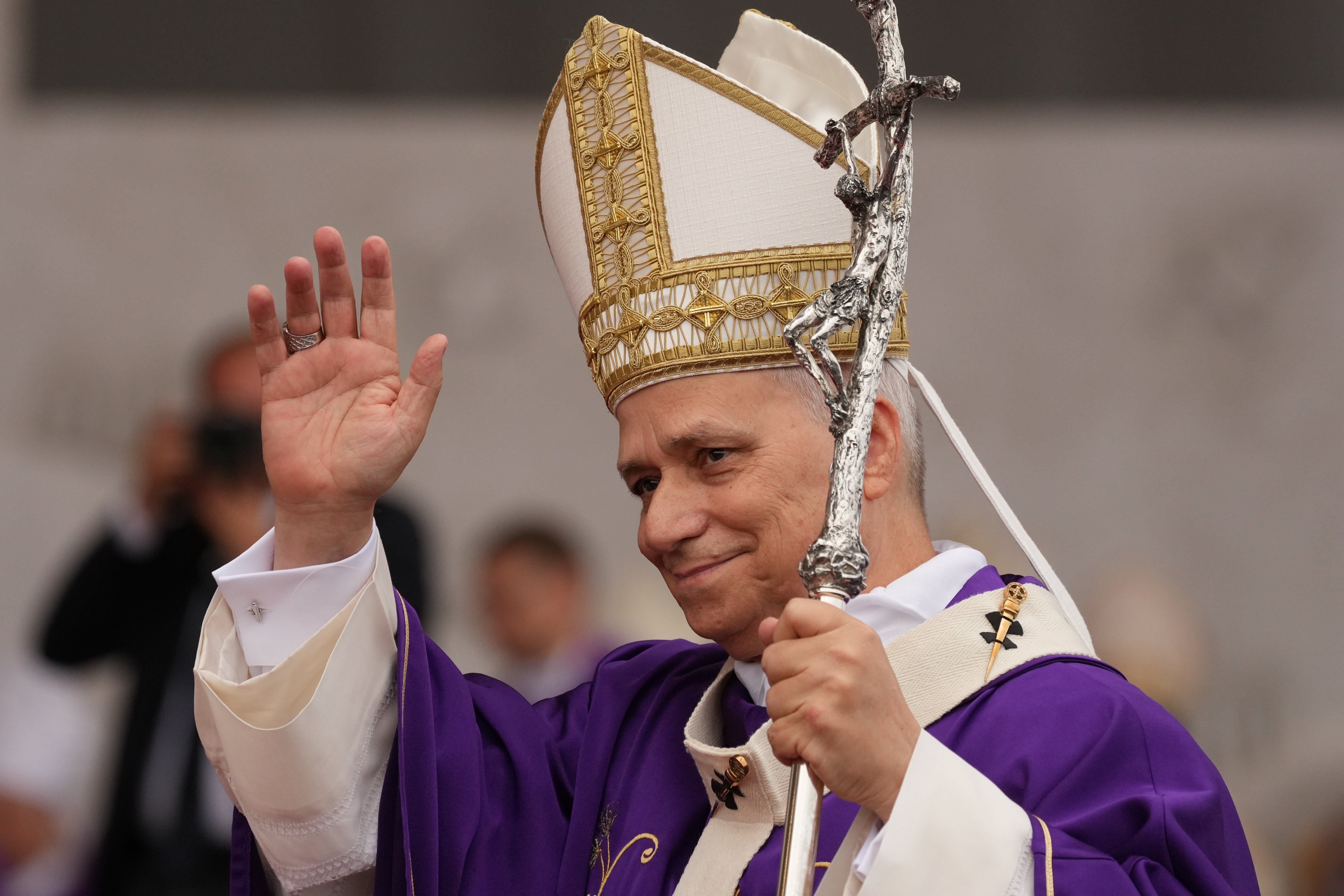October 17, 2018 at 1:54 p.m.
PERSPECTIVE
Missionary who is native of Diocese celebrates St. Romero in El Salvador
The canonization of Óscar Arnulfo Romero, martyred archbishop of San Salvador, was a true fiesta in the rural parish of Monte San Juan, El Salvador, where I work as a Maryknoll lay missioner.
While the actual canonization took place in Rome on Oct. 14, the celebration in his home country was typically loud and colorful. In the capital of San Salvador, several venues hosted activities with wide participation by the faithful.
My parish is an hour outside of San Salvador, and, rather than go to the events in the city, I chose to celebrate with the people in our parish who have become like family to me in the six years that I’ve lived here.
Like the San Salvador celebration and those in many parishes around the country, we had an evening march or procession, followed by Mass and an all-night vigil that culminated (for those who could stay awake) in watching the papal Mass live from Rome, at 2 a.m. our time.
Our march went from the village at one end of the parish about a mile to the main church in the center of town. While the vigil in the capital included professional musicians and choreographed cultural events, ours was home-grown and heartfelt and featured local youths, some performing in public for the first time.
We had four choirs from different villages who enlivened the march, another that led the music at Mass and yet another that kept people awake during the night, all with songs about St. Romero and other music that gets people on their feet, clapping and interacting.
Despite some technological problems, we were able to watch a couple of videos about St. Romero, as well as the televised Mass from Rome, on a sheet strung up in the church and projected from a laptop computer.
The youths also made a moving presentation about some other martyrs of El Salvador, including the four U.S. Churchwomen (two Maryknoll Sisters, an Ursuline Sister and a lay missioner) killed here in 1980, and two catechists from our own parish of Monte San Juan.
One youth group painted a new St. Romero mural on the side of the church — our third one, this one depicting the new saint among the Salvadoran people and with his friend and fellow martyr, Rev. Rutilio Grande, SJ. Our pastor, Rev. Mauricio Saravia, also blessed a new bust of Romero at the entrance of the church.
We ran out of time for other planned activities, but everyone who came from all 12 villages of the parish got to enjoy tamales and coffee that all the different communities provided.
During the canonization Mass, when Pope Francis named St. Romero among the new saints, we stood and applauded and, of course, shot off lots of fireworks and rang the church bells!
When the canonization was announced months ago, we were discussing how we would refer to the new saint: St. Oscar? St. Romero? A priest from a nearby parish, Rev. Luís Coto, said: “He’ll always be ‘Monseñor’ to us,” indicating the respect and love the people have for him.
As we were walking in the evening procession, I heard a child behind me read the message on one of the posters: “The voice of the voiceless.” Her father explained to her, “In those days, you couldn’t say anything against the government or speak up about the bad things happening. But Monseñor wasn’t afraid to denounce the evils, and that’s why they killed him.”
During our celebration, I asked Gerardo, a parishioner now in his 80s, what Archbishop Romero meant to him. He said, “The truth and the light. There were two sides during that time, and you couldn’t believe either of them, but Monseñor Romero spoke the truth. He was the voice and the light to follow.”
While there are countless St. Romero followers, especially among the poor here, one of the great challenges today is convincing a still-significant part of the Salvadoran population — including many within the Church — of the truth about him. Assassinated while celebrating Mass by forces of the powerful ruling elite backed by the military of the 1970s-80s, St. Romero was appropriated by the left, and his history was manipulated by both sides of the armed conflict that continued for the next 12 years.
Since his beatification in 2015, there has been a more concerted effort to spread the truth about his fidelity to the Church; his compassionate and outspoken support for his people, particularly the poor, the vulnerable and the voiceless; his pleas for dialogue instead of violence; and his clamor for justice without siding with any political forces.
Hopefully, his recognition as El Salvador’s first saint will bring about a greater understanding of his life and virtues, and serve as an example of faithfulness for more of us to follow.
(Ms. Vámosy, a native of Sacred Heart parish in Stamford, has been a Maryknoll lay missioner for 10 years, serving in East Timor and Cambodia before El Salvador. She works in parish programs promoting sustainable agriculture and environmental awareness. Learn more at www.mklm.org.)
- God’s plan of salvation greater than today’s ‘weaponized strategies,’ pope says
- Take time to review the past year with God, Pope Leo suggests
- Missionary on the move: Where Pope Leo XIV might travel next in 2026
- Dispensation in Columbus diocese for those who fear immigration crackdown pursuit
- Puerto Rico Catholic governor signs historic personhood law for the unborn
- Wisconsin man’s Catholic faith revived after finding bishop’s crosier in scrapyard
- ‘Knives Out’ discovers the strange, attractive light of the Christian story
- Why is New Year’s Day a holy day of obligation?
- India: Christmas celebrations disturbed or canceled over Hindu nationalist violence
- Vatican says close to 3 million people saw Pope Leo at the Vatican in 2025








Comments:
You must login to comment.